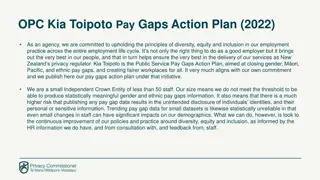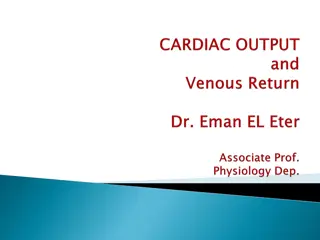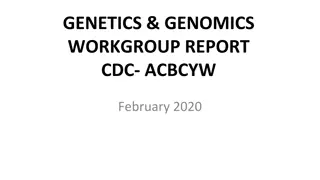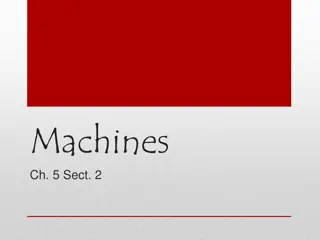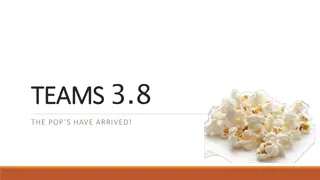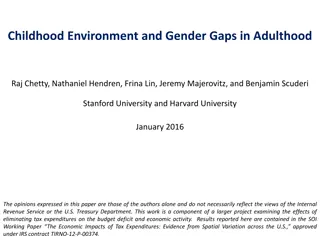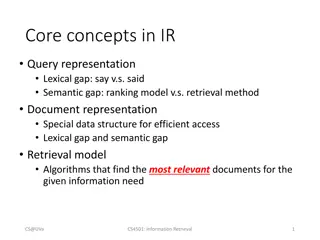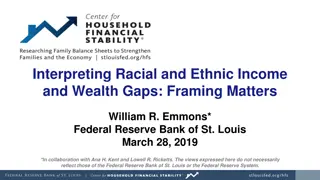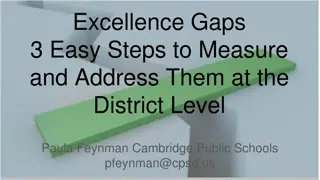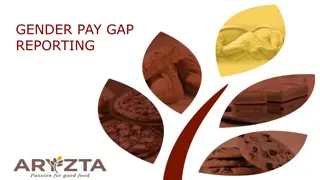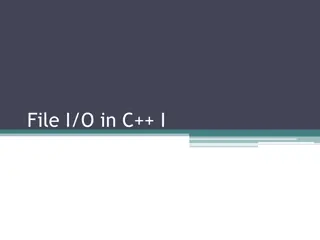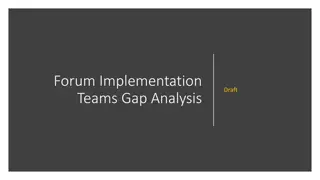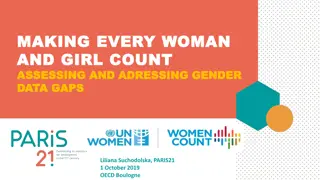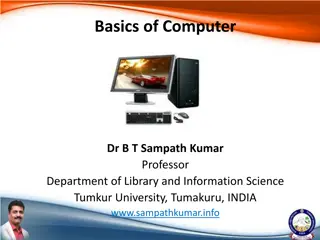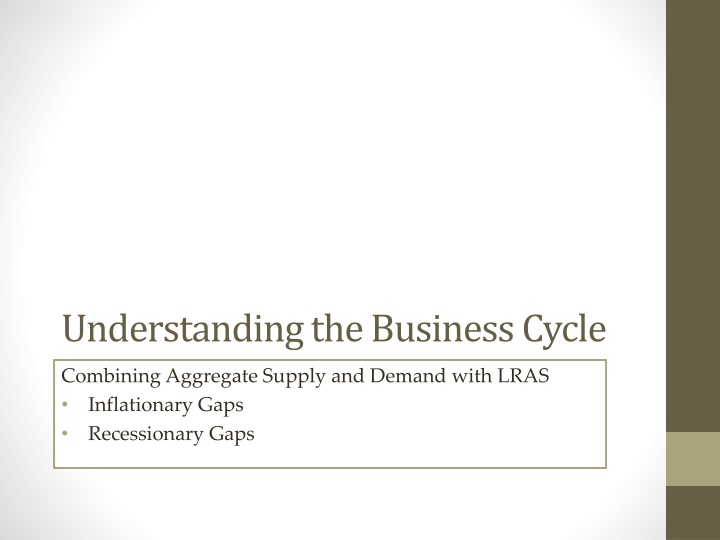
Business Cycle and Output Gaps in Macroeconomics
Explore the business cycle in macroeconomics by understanding aggregate supply and demand, equilibrium GDP, inflationary gaps, and recessionary gaps. Learn how fluctuations in real GDP around potential GDP indicate below full employment, full employment, and above full employment equilibriums. Discover the concepts of inflationary and recessionary gaps and how adjustments are made towards full employment in the economy.
Uploaded on | 0 Views
Download Presentation

Please find below an Image/Link to download the presentation.
The content on the website is provided AS IS for your information and personal use only. It may not be sold, licensed, or shared on other websites without obtaining consent from the author. If you encounter any issues during the download, it is possible that the publisher has removed the file from their server.
You are allowed to download the files provided on this website for personal or commercial use, subject to the condition that they are used lawfully. All files are the property of their respective owners.
The content on the website is provided AS IS for your information and personal use only. It may not be sold, licensed, or shared on other websites without obtaining consent from the author.
E N D
Presentation Transcript
Understanding the Business Cycle Combining Aggregate Supply and Demand with LRAS Inflationary Gaps Recessionary Gaps
UNDERSTANDING THE BUSINESS CYCLE Where AD and AS meet is considered to be Equilibrium GDP. There are 3 possible Macroeconomic Equilibriums: Below Full Employment Equilibrium: when potential GDP exceeds equilibrium real GDP. Full Employment Equilibrium: When potential GDP equals equilibrium Real GDP Above Full Employment Equilibrium: when equilibrium real GDP exceeds potential GDP.
THE BUSINESS CYCLE -Output Gaps Fluctuations in aggregate demand bring fluctuations in actual real GDP around potential GDP. Potential GDP = Full Employment In year 1, real GDP equals potential GDP. The economy is at full employment.
THE BUSINESS CYCLE Output Gaps In year 2, at a business cycle peak, real GDP exceeds potential GDP. The economy is operating at above full employment. (Inflationary Gap) In year 3, real GDP equals potential GDP. The economy is back at full employment.
Inflationary Gap The figure shows adjustments toward full employment. Real GDP exceeds potential GDP there is an inflationary gap and the price level rises. As the money wage rate gradually rises, aggregate supply decreases (cost of inputs), real GDP decreases, and the price level rises farther.
THE BUSINESS CYCLE Output Gaps In year 4, at a business cycle trough, real GDP is below potential GDP. The economy is operating at below full employment. (Recessionary Gap) In year 5, real GDP equals potential GDP. The economy is back at full employment.
Recessionary Gap Potential GDP exceeds real GDP recessionary gap and the price level falls. Eventually, the money wage rate starts to fall, aggregate supply increases (cost of inputs), real GDP increases, and the price level falls farther.
Inflationary and Recessionary Gaps Adjustment Toward Full Employment When the economy is away from full employment, forces operate to restore full employment. This is what we practiced yesterday (if AS shifts rightward, how will we get back to long-run equilibrium?) Inflationary gap is a gap that exists when real GDP exceeds potential GDP and that brings a rising price level. Recessionary gap is a gap that exists when potential GDP exceeds real GDP and that brings a falling price level.
Aggregate Supply Fluctuations Aggregate Supply Fluctuations Aggregate supply fluctuates for two types of reasons: Potential GDP grows at an uneven pace. The money price of a major resource, such as crude oil, might change. Stagflation is a combination of recession (falling real GDP) and inflation (rising price level).
Stagflation Figure 28.10 shows an oil price cycle. A rise in the price of oil decreases aggregate supply and shifts the AS curve leftward to AS1. Real GDP decreases, and the price level rises. The economy experiences stagflation.
Expansion AS Increase A fall in the price of oil increases aggregate supply and shifts the AS curve rightward to AS2. The price level falls and real GDP increases. The economy experiences an expansion.
Fiscal Policy Impacts on the Gaps Fiscal Policy: Deliberate changes in government spending and taxation to achieve full employment, control inflation and encourage growth. Expansionary Fiscal Policy: Fiscal Policy enacted in order to increase aggregate demand and expand real output. Contractionary Fiscal Policy: Fiscal Policy enacted in order to decrease aggregate demand and control inflation.
Expansionary Policies 1. Increased Government Spending 2. Tax Reductions 3. Combo of 1 &2
Contractionary Policies 1. Decrease Government Spending 2. Increase Taxation Taxes 3. Combo of 1 & 2


